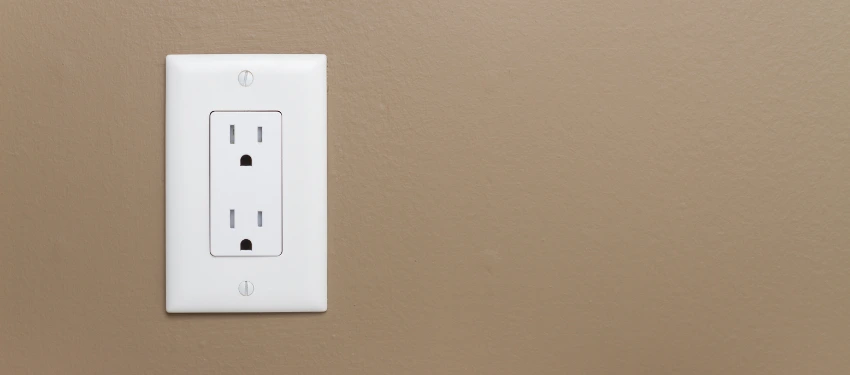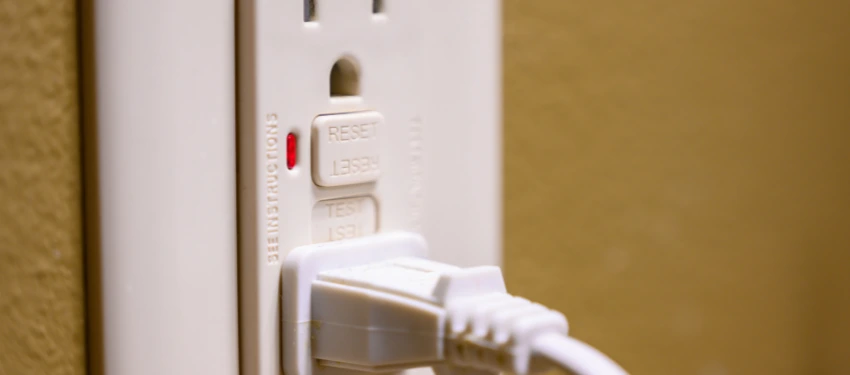Almost everything in our home runs through electricity, and by just plugging in our appliances, voilà, you will be able to use your device for whatever purpose it may be – for cooking, entertainment, work, and more. This is where the electrical outlets in our homes play a major part. An electrical outlet or receptacle is basically the bridge that connects our electrical device to our home’s electrical supply. So without this, we wouldn’t be able to easily and safely tap into our home’s electrical circuits. Did you know that an average American home has 75 electrical outlets? They are mostly the three-prong outlets, 15-amp outlets, GFCI outlets, and AFCI outlets. With the modernization, homes now have USB, rotating and even smart outlets. But no matter what type of outlet you have in your home, it will spell disaster and inconvenience if it suddenly stops working.
Issues with your home’s electrical outlets will surely arise over time. It could be from the usual wear and tear – no wonder as we have cord plugs inserted and removed thousands of times. It could also be from issues with loose wire connections, poor quality, tripped circuit breakers or GFCIs, worn-out slots, and faulty outlets due to improper installation. There are also times that even though an outlet is working, an existing receptacle needs to be upgraded to meet the current electrical code (e.g., GFCI receptacles are mandated to be placed in areas near water).
Issues with outlets could range from just a single plug-in to all the outlets in a particular room.
Know when to call your trusted electrician or if you can safely troubleshoot the issue yourself first.
If you want to learn about the common problems in our electrical outlets, read on.
When Should You Replace an Outlet?

Many homeowners could avoid the point where an outlet suddenly stops working or become a risk for electrical fire. We could all do this by recognizing the signs of deterioration and problems and being proactive in replacing outlets.
Before jumping into some basic troubleshooting tips and common issues on our home electrical outlets, here are some tell-tale signs that you need to replace your outlet:
Your outlet is noticeably hot when touched
Does your outlet feel hot to touch? This is an indicator that there may be a damaged or extremely worn-out wire. Don’t wait for your outlet to suddenly start a fire, call an electrician immediately.Signs of discoloration or melted plastic
Discoloration in an outlet or even the surrounding wall area is generally caused by heat. It is a sign that your outlet is burned, damaged, or perhaps not installed properly. When there are short circuits in your outlet, melted plastic and scorched areas can be observed. Stop using the outlet immediately, as this could result in electrical arcs or overheating. Have it examined and replaced by your trusted electrician.Smokes, sparks, and burning smell are observed when an appliance is plugged in
If you notice any of these three, then it is a big red warning sign that your outlet needs to be replaced ASAP. Don’t forget to turn off the power to that outlet in your breaker box immediately before calling in a qualified electrician.You are still using two-pronged outlets or live in an old house
Beware! If you are living in an old house that still has its original outlets, or you still have the ungrounded two-prong outlets instead of three, then it’s time for an upgrade. These outlets are outdated and you won’t be able to reap the benefits of having safer, modern outlets. In addition to not being able to match the requirements of modern technology, you are actually violating the electrical codes.In addition to discoloration, signs of damage, cracks, or missing parts due to age should also be considered as warning signs that you need to upgrade.It’s high time to modernize your outlets.
Even if you are not experiencing any issues with your outlet, or there are no signs of wear and tear, upgrading your outlet will benefit you. For example, current outlets with USB ports are a smart, space-saver move. Improved safety is also a good consideration to upgrade, like using pop-outlet or recessed outlets. There are even advanced Wi-Fi outlets that allow homeowners to operate their outlets from anywhere, so no worries if you accidentally left your straightening iron plugged in.
Safety first and basic troubleshooting:

In case your outlet has stopped working and you want to investigate your outlet issue, you can perform these basic safety measures:
- Switch off the lights in the area that you are in and carefully unplug all appliances. As you unplug each appliance, make sure to check the condition of your cord because at times, there is no issue with the outlet, but the problem is actually with the cord itself.
- Check if the problem affects only one receptacle or if the whole room is affected. If you lose power to one of your receptacles, chances are outlets nearby will also lose power. Don’t forget to mark the dead outlet. This will help when giving the information to your electrician.
- Check if the problem is with your electrical device. Just simply plug your device into another outlet. If it works, then you’ll know for sure that your outlet is not working. Or you could plug a different device into your outlet to see.
- If you see sparks from the outlet, scorched marks or your outlet has a burning smell or is warm to touch, these are markers for possible electrical fires and require immediate attention from a licensed electrician. Treat this as an emergency and call your electrician ASAP.
Here are the common issues with home electrical outlets:
Tripped Circuit Breakers
 Circuit breakers will trip if an unintended electrical current is detected, like during overloading. In the case of a dead outlet, your circuit breaker should be one of the first things to check. This is very easy to spot – just check if the lever of your circuit breaker is flipped to either completely off or in the middle position.
Circuit breakers will trip if an unintended electrical current is detected, like during overloading. In the case of a dead outlet, your circuit breaker should be one of the first things to check. This is very easy to spot – just check if the lever of your circuit breaker is flipped to either completely off or in the middle position.You can turn it back on and check if it resolves the issue.
Loose Wire Connections or Improper Installation
If one or more of your receptacles are affected by a loose wire, it could mean the wiring has gradually loosened over time. This is often observed with old wirings.It could also be that the wire was not connected properly from the start. You can commonly see this issue if a receptacle was wired using push-in fittings at the back of the receptacle. This could also happen when there is an incorrect use of wire nuts, causing the outlet to stop functioning properly.
If you are not comfortable in checking and reattaching wiring in case it is indeed a loose connecting wire, it’s best to call an electrician.
Tripped Ground Fault Circuit Interrupters or GFCI
 GFCI functions like a circuit breaker, in case of power surges, your GFCI will automatically turn the plug off.You can simply check the small reset button on the surface of your outlet and press it to turn it back on in case that is the cause of your outlet issue.
GFCI functions like a circuit breaker, in case of power surges, your GFCI will automatically turn the plug off.You can simply check the small reset button on the surface of your outlet and press it to turn it back on in case that is the cause of your outlet issue.Worn-out slots
Electrical outlets have metal points inside the body. It is designed to grip the neutral, hot, and grounding prongs on the cord plugs. Just like with anything else, they will eventually wear out with usage and lose their gripping power. This can cause issues in the wiring and may result in your circuit breaker tripping.Replacement is the solution to this type of problem.
Poor quality outlet
 If you are using a cheap, poor-quality receptacle, it will be more susceptible to issues and will work only for a short span of time. This is why electricians in Same Day Pros always recommend outlets that are approved by well-known testing agencies. Investing in high-quality receptacles guarantees longevity and safety.
If you are using a cheap, poor-quality receptacle, it will be more susceptible to issues and will work only for a short span of time. This is why electricians in Same Day Pros always recommend outlets that are approved by well-known testing agencies. Investing in high-quality receptacles guarantees longevity and safety.No matter what the reason is for your outlet problem, the best course of action is to call in a licensed electrician. What we have mentioned above are common issues, but diagnosing a problem is not always straightforward. Experience and the right equipment are needed to not only pinpoint the issue but also apply the necessary solution safely. Don’t forget that electricity is not something to be taken lightly. In the hands of the untrained, a faulty system could cause electrical shocks or burns or even cause property damage. You may try to troubleshoot, but when things are unfamiliar, do not pursue any DIY repairs and contract a professional electrician to take over.
As always, we stress that prevention is better than cure. You can avoid all electrical issues, not only with your outlets, through regular inspection from the pros. In addition, at the first sign of an electrical issue, don’t wait for it to worsen before calling out your trusted electrician.
If you need a licensed electrician to help you replace, repair, or upgrade your electrical outlets, let Same Day Pros help you. Click here to find an electrician near you.





